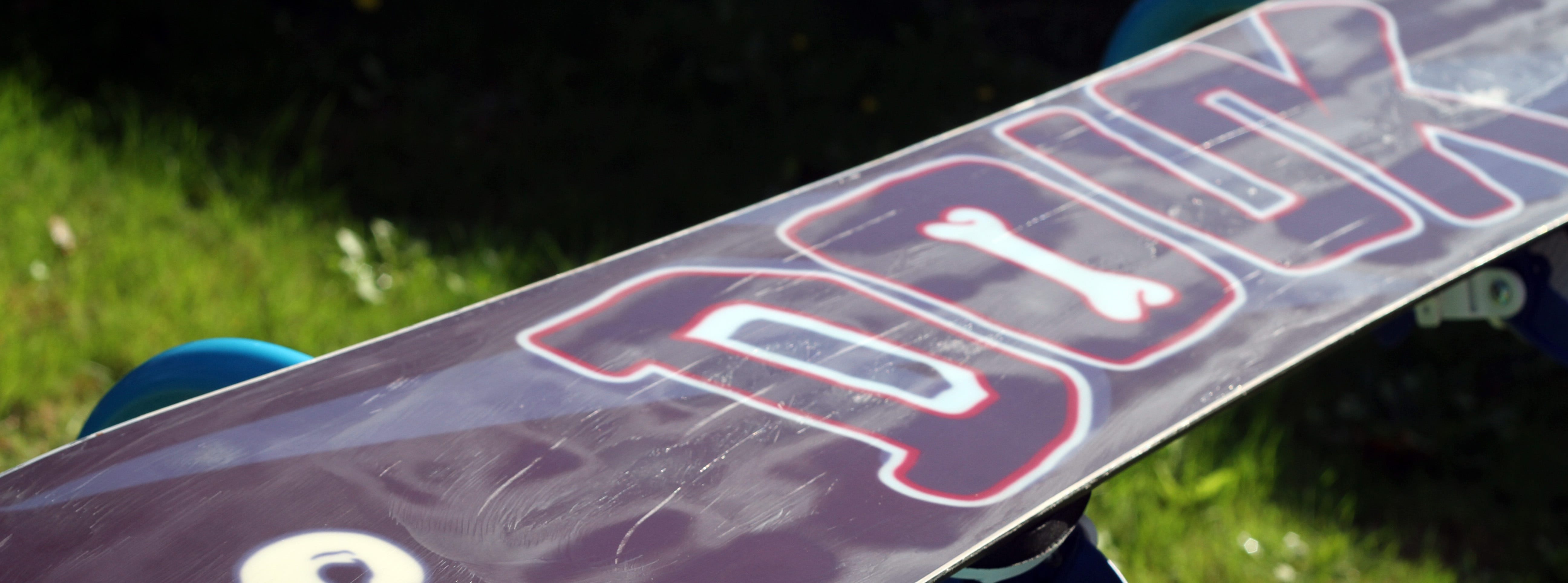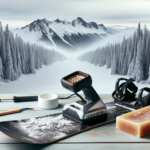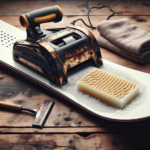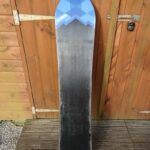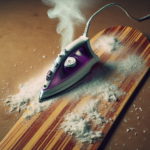You’ve just returned from the slopes and your snowboard needs a good waxing. It’s a part of regular maintenance that cannot be ignored, as it helps your board glide more smoothly over the snow. At the last minute, you realize you’ve run out of the usual wax, but you’ve got plenty of candle wax lying around. You start to wonder, can you use candle wax to wax a snowboard? You’re hesitant though, unsure if it’s the right move or if it would actually do more harm than good. If this is the predicament that you are currently facing or it is something you’ve pondered, then this article is just for you. We’ll explore the plausibility of using candle wax for snowboard waxing and its potential effects on your board’s performance.
Understanding Snowboard Wax
Before we delve further into the question at hand, it’s important to understand what snowboard wax is and why it’s commonly used.
Purpose of snowboard wax
Snowboard wax serves a crucial purpose in your summer snowboarding adventures. Its primary function is to minimize friction between your snowboard and the snow. When you’re gliding downhill, the friction generated by moving over the snow can slow you down, diminishing the thrill of the ride. Wax serves as a lubricant, ensuring a smooth glide. It also protects your board from the caustic effects of the snow.
Types of snowboard wax
There are multiple types of snowboard wax designed to accommodate varying weather conditions and types of snow. The most common are all-temperature wax, which works reasonably well under any conditions, and temperature-specific wax, that performs optimally at specific temperature ranges. Some waxes are engineered for competitive racing, while others are made from eco-friendly materials for the environmentally-conscious rider.
Candle Wax Composition
Now that we’ve talked about snowboard wax, let’s discuss another type of wax – candle wax.
Common ingredients in candle wax
Candle wax is typically composed of paraffin, beeswax, tallow, or even soy. Paraffin wax is a byproduct of petroleum, coal, or shale oil. Beeswax is naturally produced by honey bees, while tallow is derived from animal fat, and soy wax from soybean oil. These waxes are chosen for their ability to hold a flame and slowly release heat and light.
Differences between candle wax and snowboard wax
Snowboard wax and candle wax aren’t the same. Snowboard wax is usually made from a mixture of high-molecular hydrocarbons. It’s specifically formulated to reduce friction and withstand extreme cold. On the other hand, candle wax, though it has similar base components, has a different consistency and melting point that aren’t geared towards friction reduction in cold temperatures.
Efficacy of Candle Wax on Snowboards
So, can you use candle wax in place of snowboard wax? Truth be told, you can, but it’s not the best idea and here’s why.
Performance comparison: Candle wax Vs. Snowboard wax
In terms of performance, candle wax doesn’t hold a candle (pun intended) to snowboard wax. Snowboard wax has a particular formulation, allowing it to penetrate the pores of the snowboard, ensuring a smooth glide. Candle wax is harder and doesn’t provide the same level of glide on snow. It typically just sits on the base of the board and will scrape off easily, thus resulting in less effective results.
Drawbacks of using candle wax on a snowboard
One of the key drawbacks to using candle wax on a snowboard is its short lifespan. As it’s not designed to cope with the friction and speed of snowboarding, it quickly slides off onto the snow leaving your board unprotected and reducing your speed. Additionally, its high melting point makes it challenging to apply uniformly on the board.
Experiments with Candle Wax
While the consensus is usually against using candle wax on a snowboard, that doesn’t mean people haven’t tried it.
Personal anecdotes of using candle wax on a snowboard
Some amateur snowboarders have attempted to use candle wax in a pinch, and their experience has generally been the same. While the wax does create some glide in the initial stages, it rapidly wears off, resulting in less control and a slower ride.
Quality and duration of glide with candle wax
In terms of glide quality and duration, candle wax falls short. The glide is typically less smooth, and the wax wears off much faster than its snowboard-specific counterpart. As such, it leaves your board exposed to the damaging effects of snow and ice, meaning you’ll have to re-wax your board every few runs.
Professional Opinions on Using Candle Wax
The opinions of professionals in the field affirm the opinion we’ve formed so far: candle wax is not advisable for use on your snowboard.
Advice from professional snowboarders
Professional snowboarders would strongly advise against it. High-quality performance requires high-quality materials, and candle wax just doesn’t do the trick.
Insights from snowboarding equipment manufacturers
Perhaps the most compelling case against using candle wax comes from snowboarding equipment manufacturers. They emphasize the importance of using a wax tailored specifically for the activity, both for optimal performance and to prolong the lifespan of the snowboard.
Impact of Candle Wax on Snowboard Lifespan
Substituting snowboard wax with candle wax isn’t just a question of performance – it could also impact your snowboard’s condition and its lifespan.
Potential damage to snowboard surface
Repeated use of candle wax could potentially damage your snowboard. Since candle wax doesn’t last on the board for long, it leaves your board exposed to the rough and abrasive snow layers. This unprotected contact could lead to scratches, base burn, and overall base damage.
Long-term effects of using candle wax
In the long run, the use of candle wax could lead to an accelerated degradation of your snowboard. This is because candle wax doesn’t provide the level of friction reduction or protection that snowboard wax does.
Environmental Effects of Candle Wax
The environment is something snowboarders should care about; after all, without winter, there’s no snowboarding.
Environmental impact of using candle wax
The environmental impact of using candle wax on your snowboard might seem negligible, but it can add up over time. As you slide down the slopes, the wax scrapes off onto the snow. If the wax contains harmful chemicals, they could end up in the groundwater.
Sustainability of snowboard wax versus candle wax
While some snowboard waxes might contain fluorocarbons harmful to the environment, many companies are switching to eco-friendly alternatives. When choosing between the two, both from a performance and environmental standpoint, snowboard wax is clearly the preferable choice.
Cost Comparison: Candle Wax and Snowboard Wax
When it comes to price, candle wax might seem like the cheaper option, but when you consider the associated costs, it doesn’t really hold up.
Price differences between the two types of wax
Sure, one candle might be cheaper than a bar of snowboard wax. However, given the amount you’d need to keep re-applying candle wax and the potential damage it could cause to your board – you might end up spending more money in the long run.
Economical aspects of resorting to candle wax
In the long run, resorting to candle wax might increase your costs. The additional expenditures for snowboard repairs and constant reapplications of the wax can easily surpass the cost of a bar of snowboard wax which lasts longer and offers better protection.
Properly Waxing Your Snowboard
It’s not just about selecting the right wax. How you apply it also has a profound impact on your snowboard’s performance.
Snowboard waxing techniques
Waxing a snowboard involves cleaning the base, applying the wax with a waxing iron, allowing it to cool, and then carefully scraping off the excess. After scraping, a brush is used to buff the base. This process ensures the wax gets into the pores of your board, providing optimal glide and protection.
Snowboarding safety considerations in terms of waxing
Ensuring your snowboard is properly waxed is also a safety consideration. If your board doesn’t have the proper glide, you could lose control on the slopes. So, stick to the recommended waxing practices and ensure you have the right wax for your conditions.
Alternative Snowboard Wax Options
If you’re looking for alternatives to traditional snowboard wax, you’ll be happy to know you have options.
Other household items as potential snowboard wax
Some prefer to use more natural products like beeswax or even certain types of cooking oils as a substitute for conventional snowboard wax. While these might not deliver high-end, race-ready performance, they could serve for a fun, casual day on the slopes.
Advancements in snowboard wax technology
As for advancements in snowboarding wax technology, wax-free bases and wax-infused bases are gaining popularity. However, traditional waxing remains the most effective and reliable method of optimizing snowboard performance.
In conclusion – Can you use candle wax to wax a snowboard? Yes, but we wouldn’t recommend it. Stick to the good old snowboard wax. It’ll ensure a smoother ride, longer life for your board, and a safer snowboarding experience.
- What Snowboard Bindings Should I Get? - January 23, 2024
- What Size Screws For Snowboard Bindings? - January 23, 2024
- How To Snowmobile On Water? - January 23, 2024

